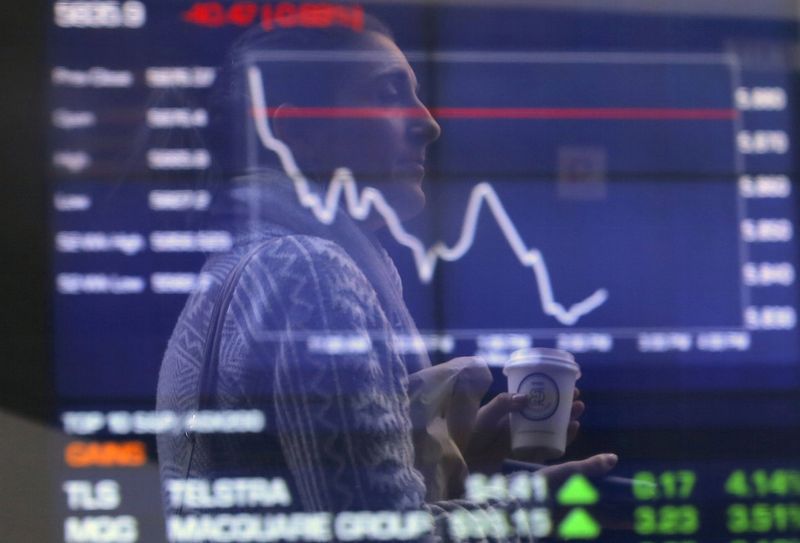This post was originally published on this site
 © Reuters. An investor is reflected in a window in front of a board displaying stock prices at the Australian Securities Exchange in Sydney, Australia
© Reuters. An investor is reflected in a window in front of a board displaying stock prices at the Australian Securities Exchange in Sydney, AustraliaBy Marc Jones
LONDON (Reuters) – Global share markets and oil fell on Monday, safe-haven gold surged and U.S. Treasury yields reached their lowest since mid- 2016, as coronavirus cases spread outside China, darkening the outlook for world growth.
Europe took a beating early on, with Italy plunging more than 4% after a spike in cases of the virus left parts of the country’s industrial north in virtual lockdown. () That put Milan on course for its worst day since 2016.
Frankfurt and Paris were both down more than 3% and London’s dropped 2.5%, meaning at least $350 billion had been wiped off the region’ market value.
The flight to safety was just as resounding. Gold surged 2.5% to a seven-year high of $1,680 an ounce, taking its gains for the year past 10%. [GOL/]
Bonds rallied, too. Ten-year U.S. Treasury yields dropped to 1.401%, their lowest since July 2016. The 30-year Treasury touched a record low at 1.855% and German yields dropped to -0.475%, their lowest in more than four months. [GVD/EUR]
“Everybody sees that this could be another leg down for the economy, and we were already in quite a fragile state to begin with,” said Rabobank’s head of macro strategy, Elwin de Groot. “It could be another step toward a recession in more countries.”
In Asia, South Korea’s slumped 3.9% after the government declared a high alert. The number of infections jumped to 763 and deaths rose to seven.
Australia’s benchmark index slid 2.25% and New Zealand fell about 1.8%. China’s blue-chip CSI300 index closed down 0.4%.
That left MSCI’s broadest index of Asia-Pacific shares outside Japan at its lowest since early February. Japanese markets were closed for a public holiday.
The virus has now killed 2,592 people in China, which has reported 77,150 cases, and spread to some 28 other countries and territories, with a death toll outside of China around two dozen, according to a Reuters tally.
Iran, which announced its first infections last week, said it had confirmed 43 cases and eight deaths, with most of the infections in the holy city of Qom. Saudi Arabia, Kuwait, Iraq, Turkey and Afghanistan imposed travel and immigration restrictions on the Islamic Republic.
“There is lots of bad news on the coronavirus front with the total number of new cases still rising,” AMP chief economist Shane Oliver wrote in a note. “Of course, there is much uncertainty about the case data. New cases outside China still look to be trending up.”
FUTURES GLOOM
Among U.S. stock futures, E-minis for the fell 2.3%. CBOE’s volatility index, the so called fear gauge, reached its highest since August.
As investors wagered central banks would step in with policy stimulus to support economic growth, U.S. fed fund futures <0#FF:> signaled more rate cuts later this year and a near 20% chance of a cut next month.
The dollar dipped to 111.34 against the Japanese yen , but against the rest of the world it was showing its safe-haven qualities.
The euro fell toward $1.08 and the Australian dollar, often traded as a proxy for China risk, tumbled to an 11-year low of $0.6585.
Korea’s won was last down 1% at 1,219.06 after falling to its weakest since August 2019. Emerging-market currencies from Mexico’s peso and Turkey’s lira to Poland’s zloty and Russia’s rouble were in the red.
In commodity markets, fell 3.5%, or $2.1, to $56.35 a barrel. dropped 3%, or $1.64, to $51.74 a barrel. Among the main industrial metals, fell 1.4% and zinc was down 2.5%. [MET/L]


